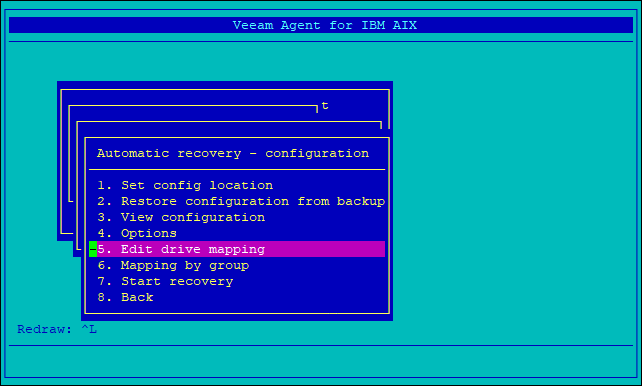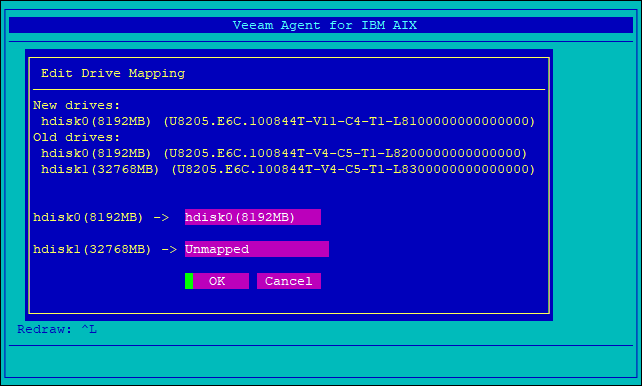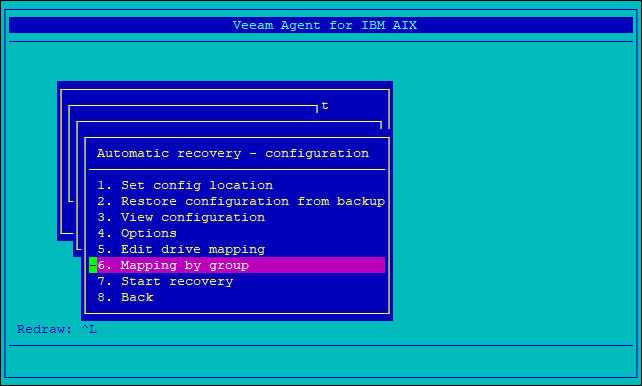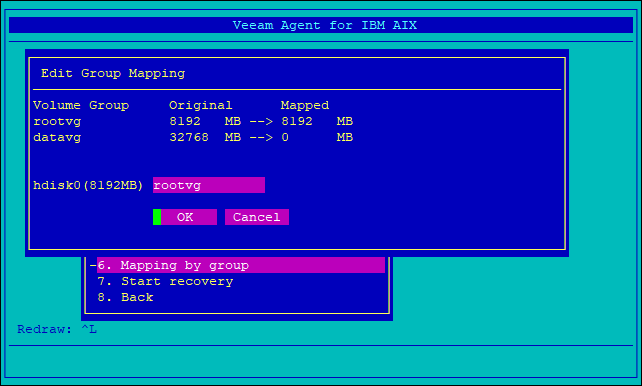 This is an archive version of the document. To get the most up-to-date information, see the current version.
This is an archive version of the document. To get the most up-to-date information, see the current version.Step 5. Map Restored Drives
You can specify mapping settings for restored drives. This option may be useful, for example, if you do not want to recover data from some disks in the backup or if you want to restore your machine on a different hardware.
Veeam Agent for IBM AIX offers two options to define drive mapping:
- Drive mapping — use this option to specify what drives in the backup must be restored to the drives on the current machine.
- Mapping by group — use this option to select volume groups to which the restored drives must belong.
You can select what drives in the backup must be restored to the drives on the current machine. To map restored drives:
- In the Automatic recovery — configuration menu, select Edit drive mapping.

- In the Edit Drive Mapping form, select what drives in the backup will be restored to the drives on the current machine and select OK.
|
If the drive display spreads over more than one screen, you can press [CTRL+N] to navigate to the next screen and press [CTRL+P] to navigate to the previous screen. |
You can use the drive mapping option to restore a system that used multiple disks to a machine with fewer disks. When recovering to fewer disks, any volume groups other than rootvg that cannot be re-created are dropped. However, a volume group spanning more than one physical volume can be restored to a single volume provided that this volume has enough capacity. In the case of mirrored volume groups, the mirroring is split if the mapping indicates this.
If you do not want to recover data from some drives from the backup, select Unmapped next to the necessary drive(s).

You can select volume groups to which the restored drives must belong. To map restored drives to volume groups:
- In the Automatic recovery — configuration menu, select Mapping by group.

- In the Edit Group Mapping form, select volume groups to which the restored drives must belong, and select OK.
In case of recovering to fewer disks, the same rules are applied to mapping by group as to drive mapping.
